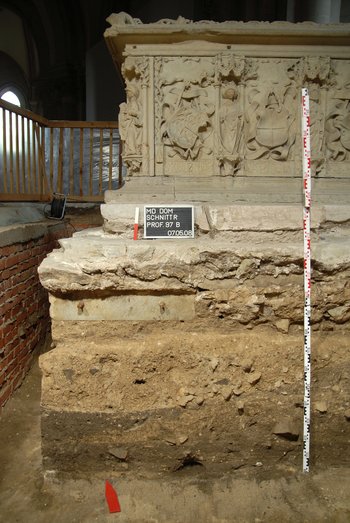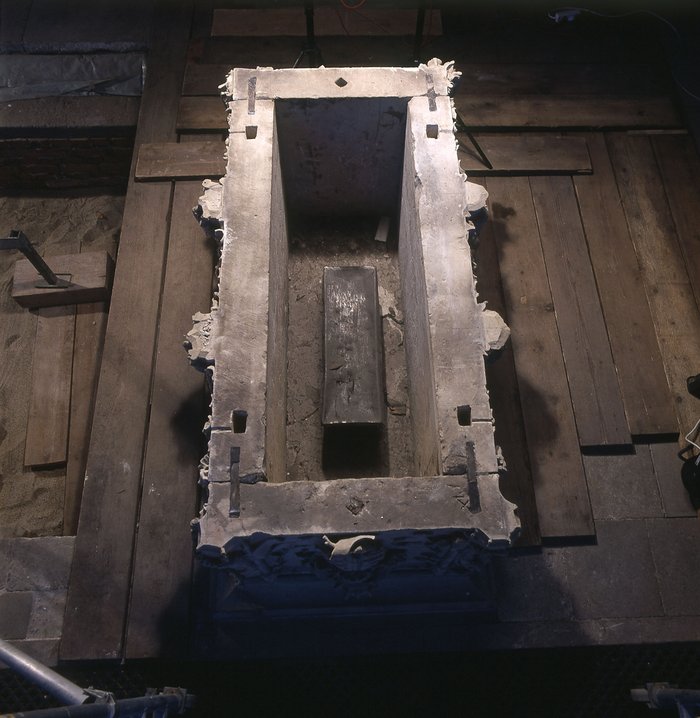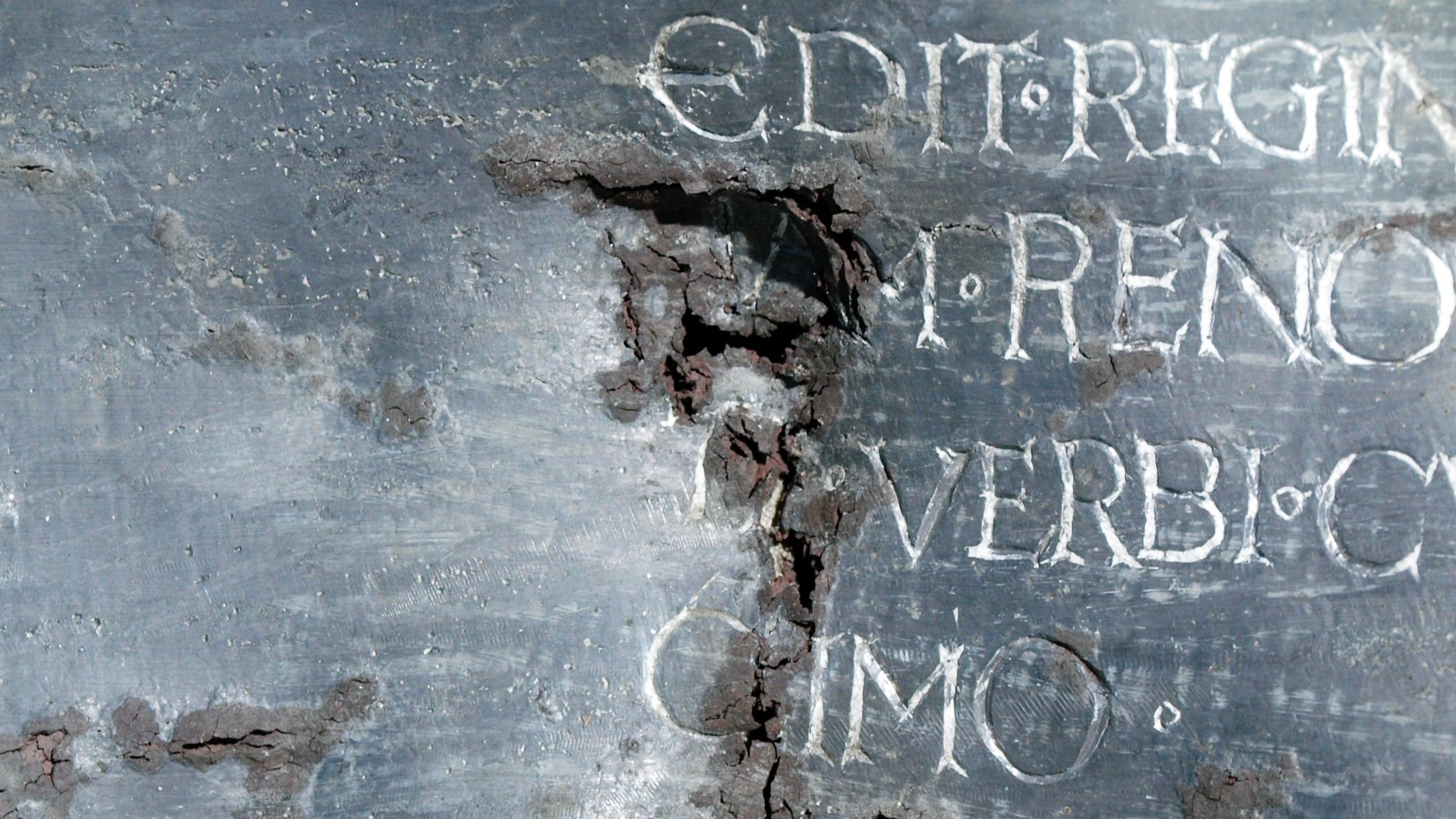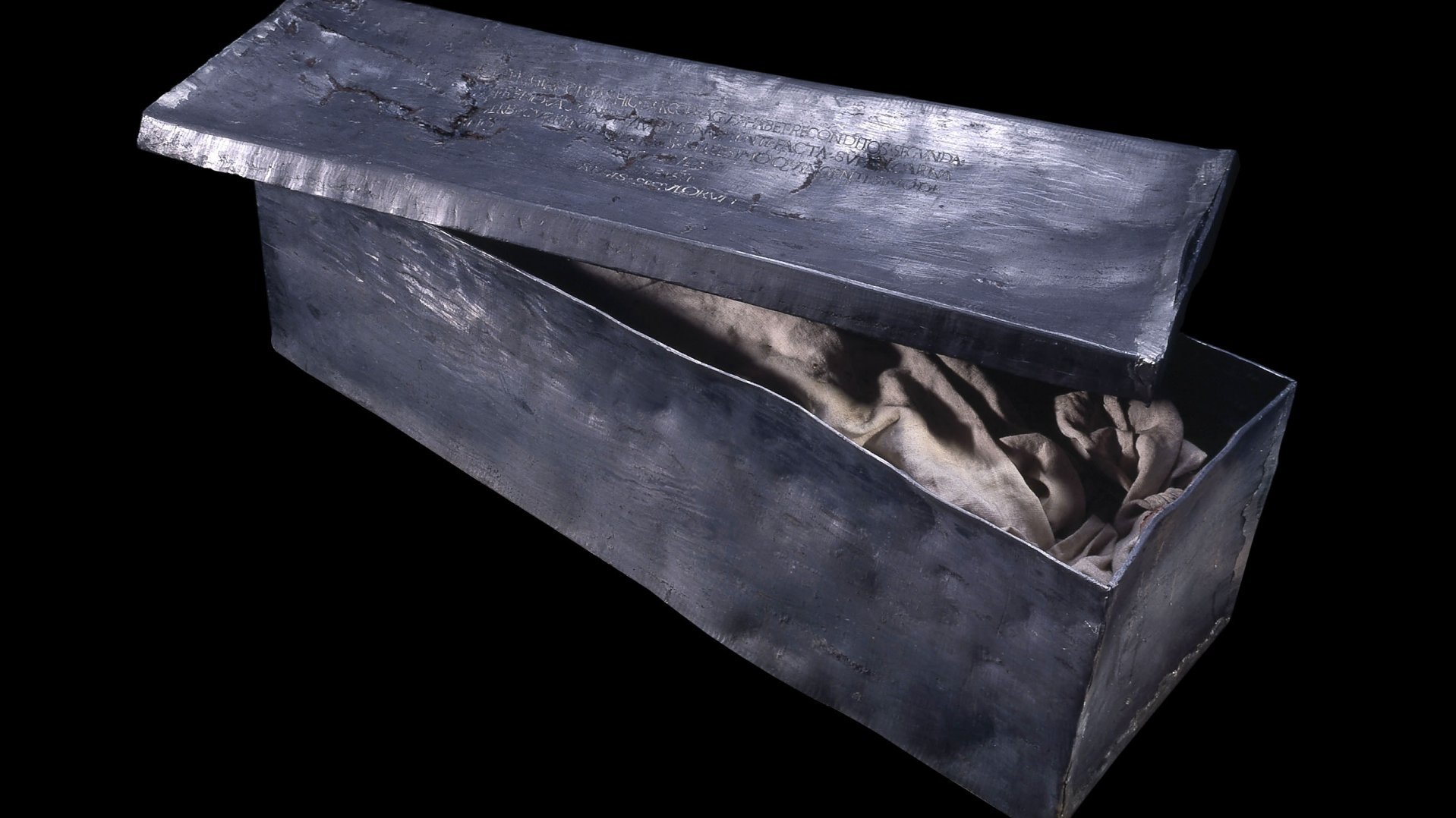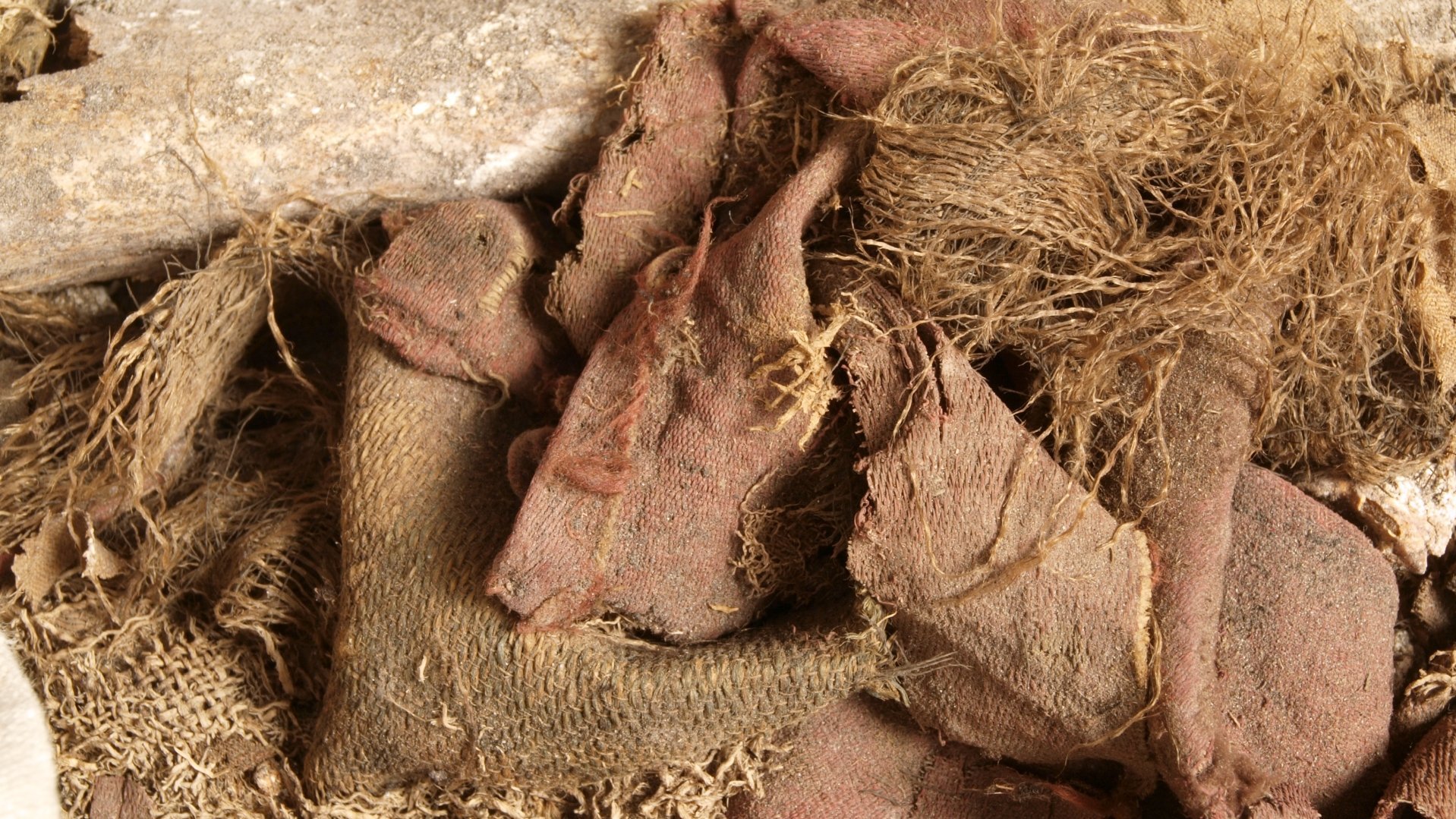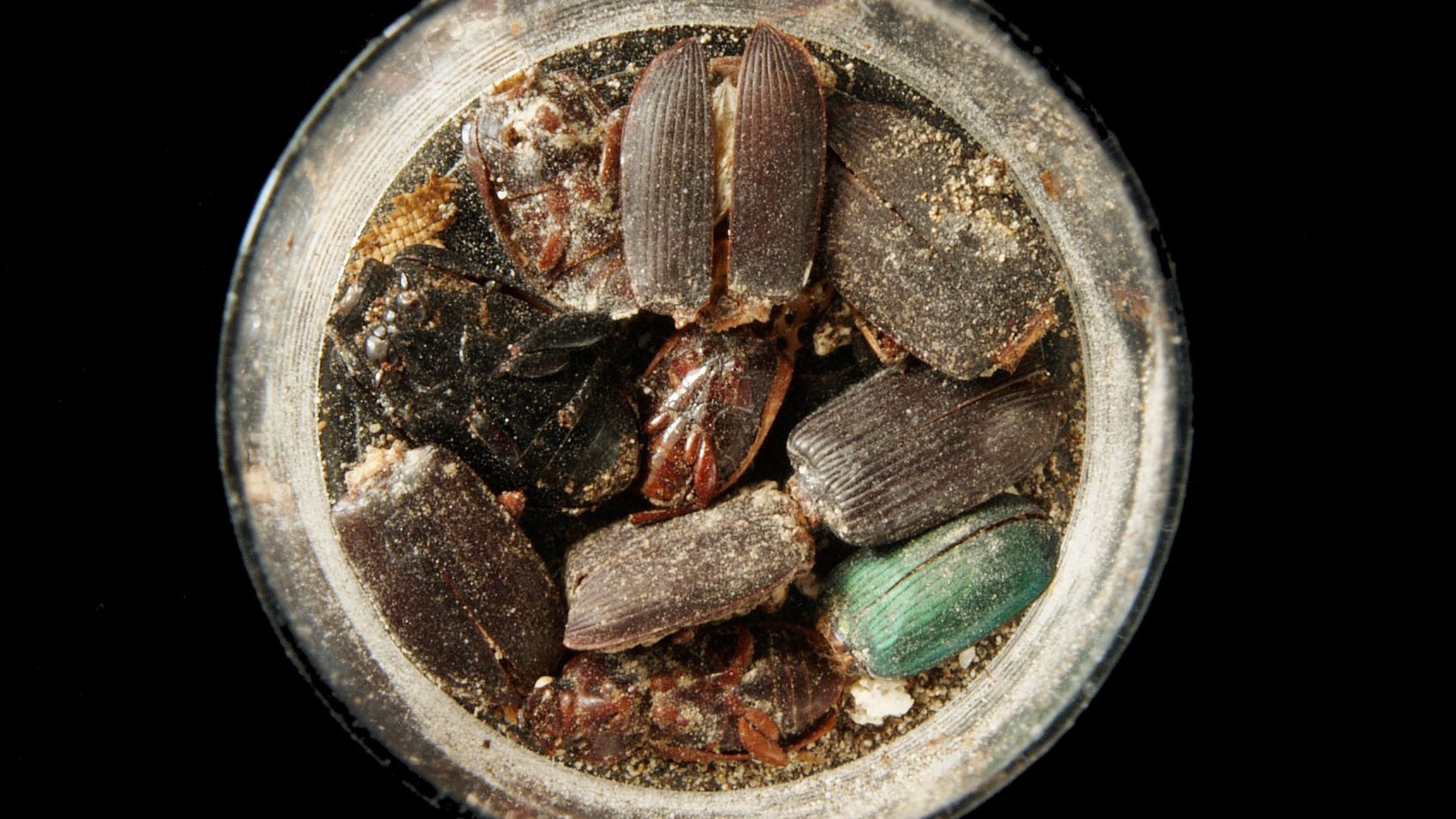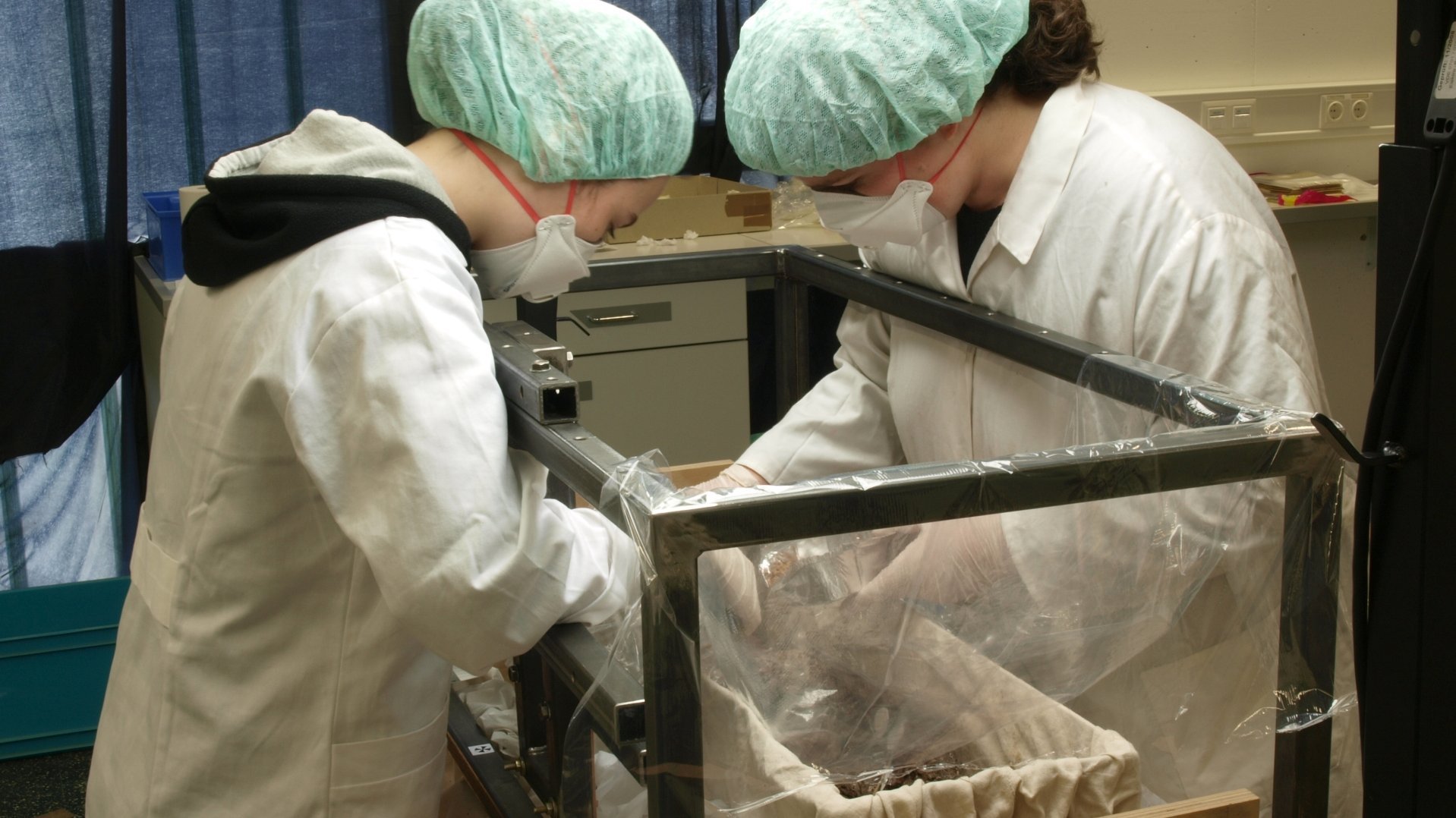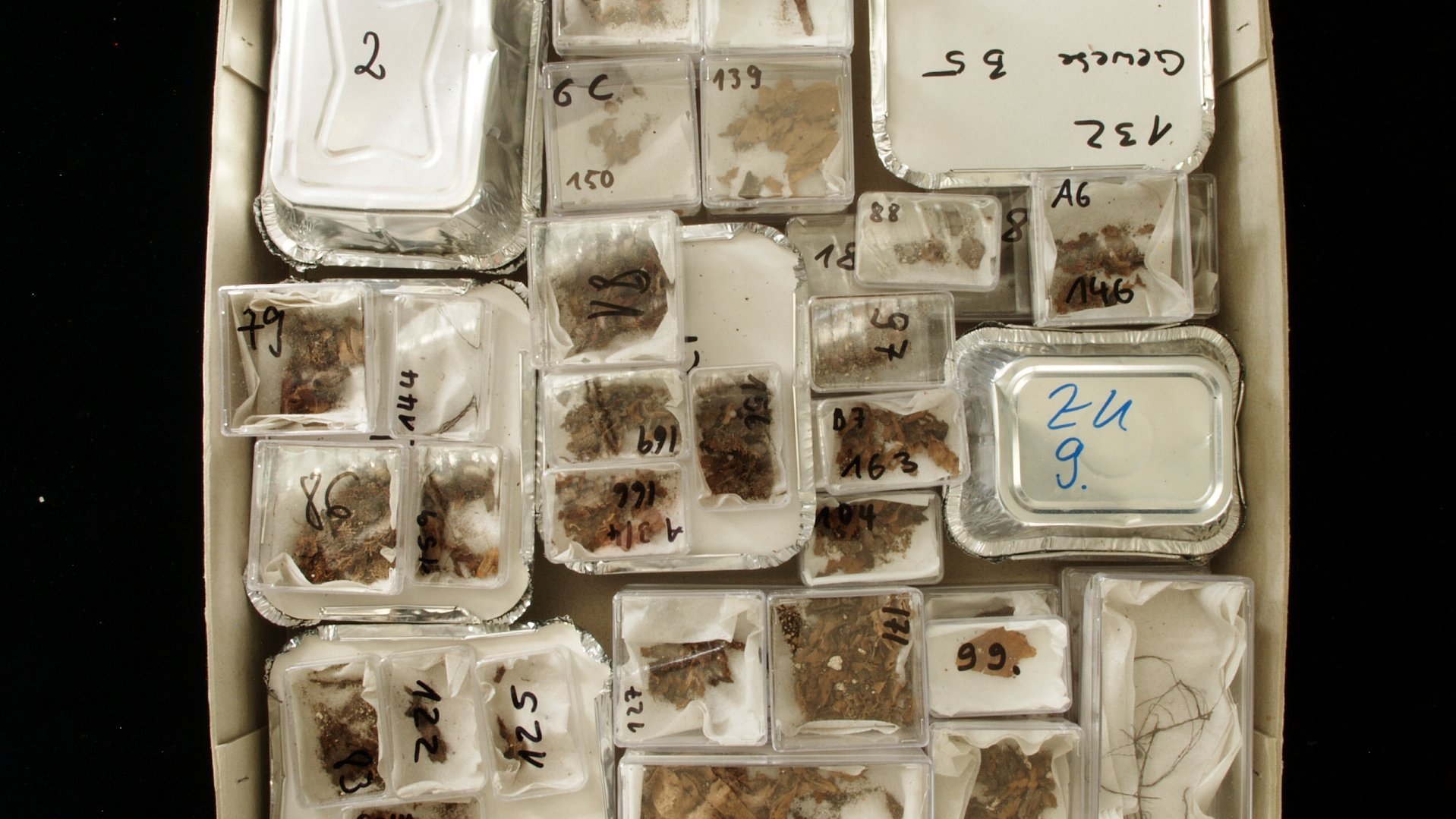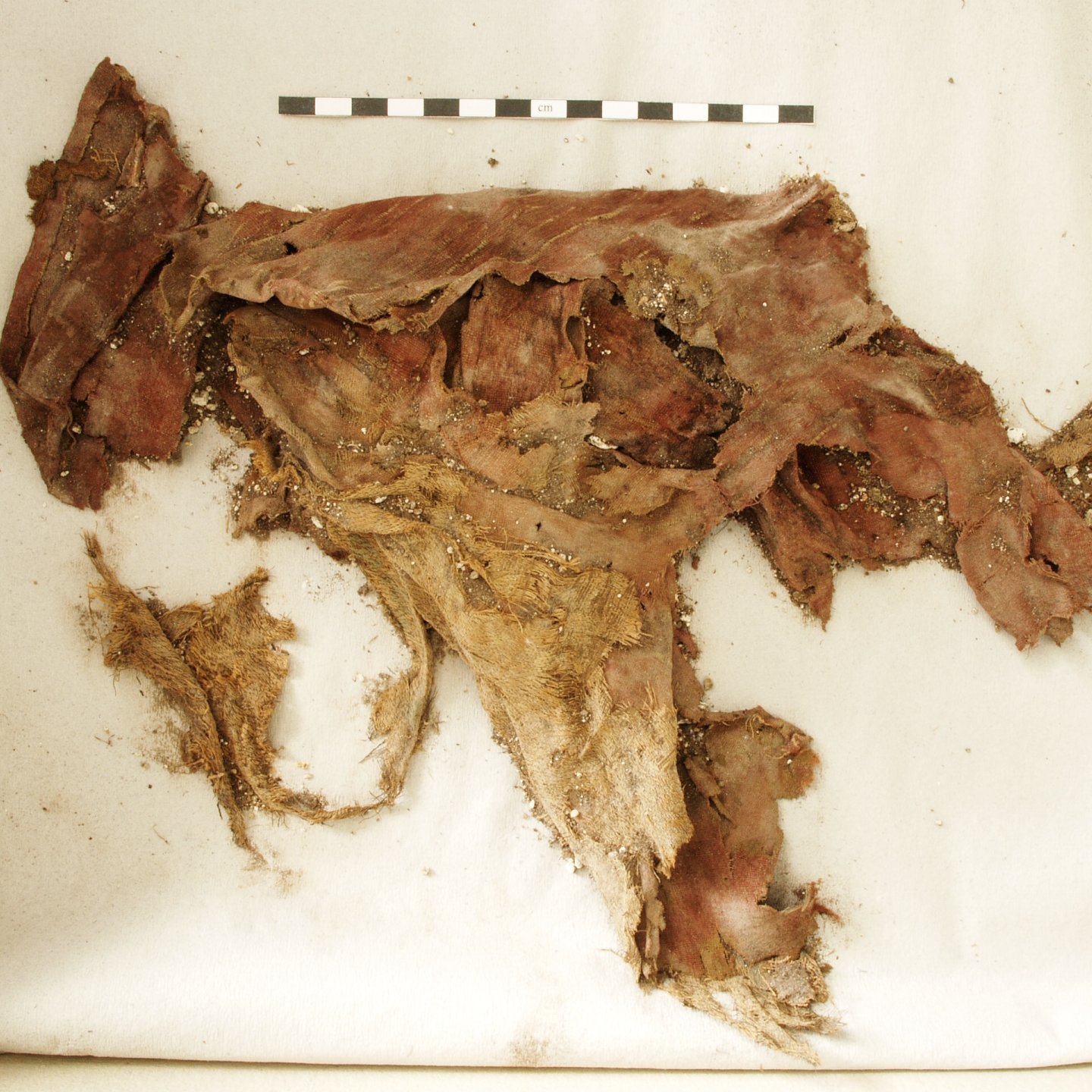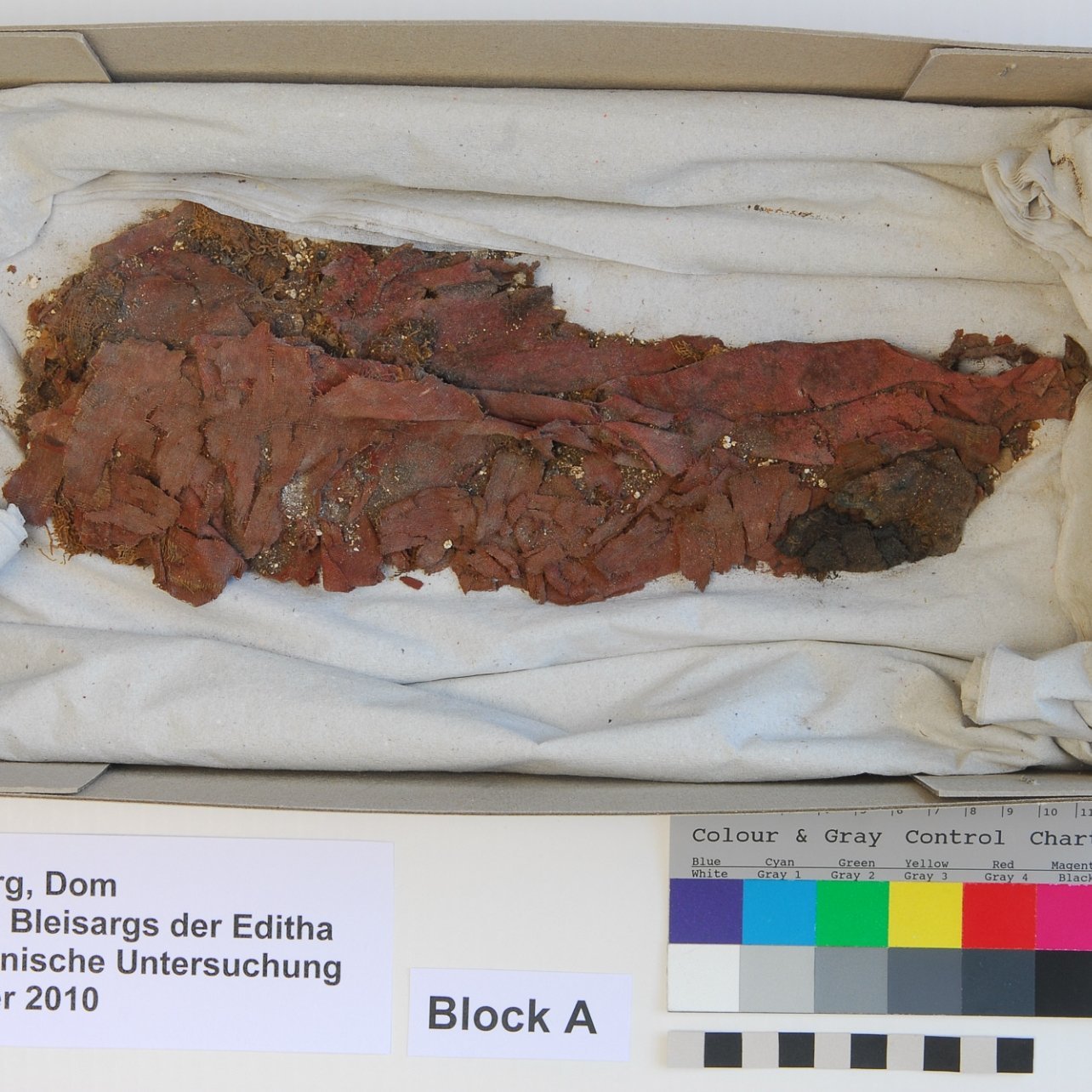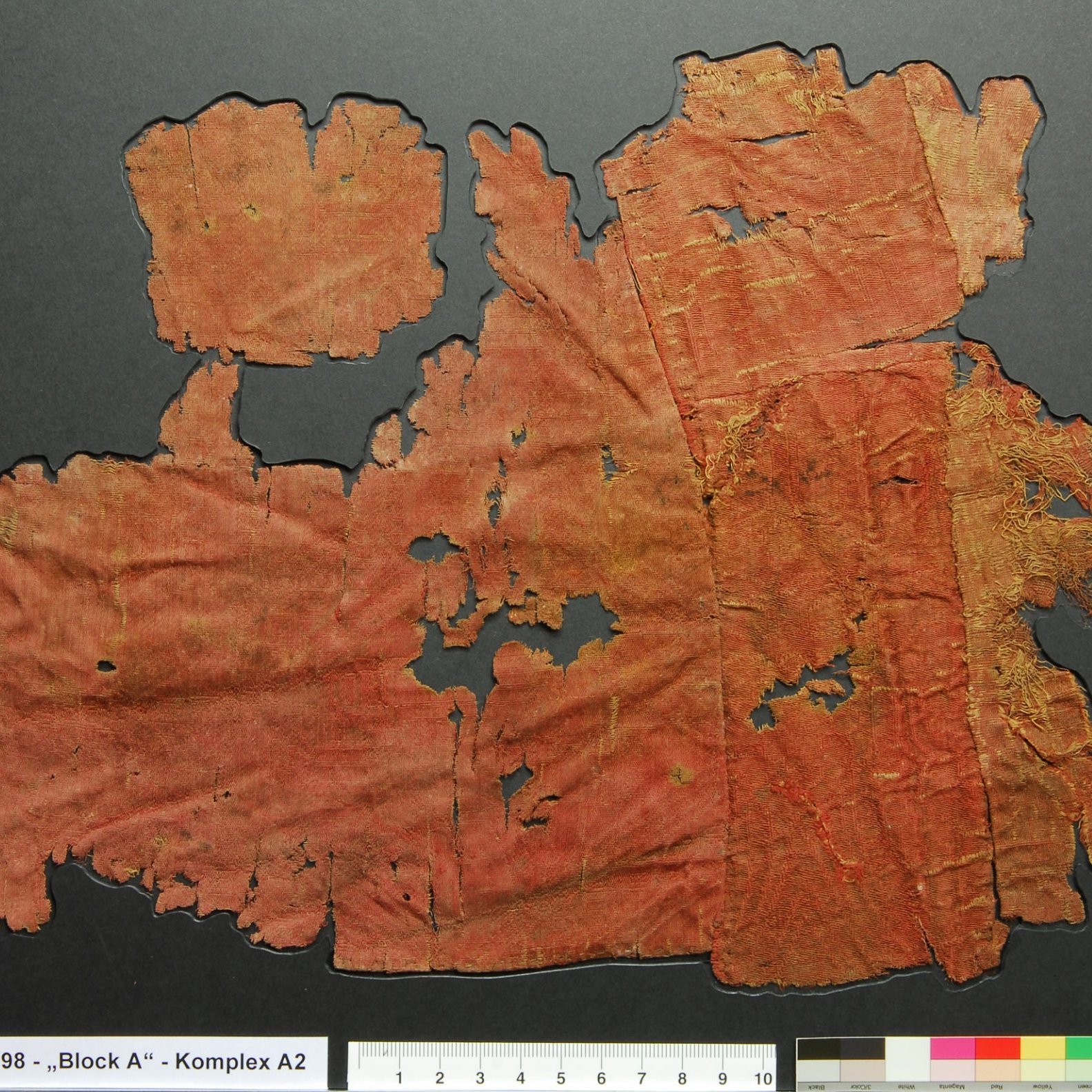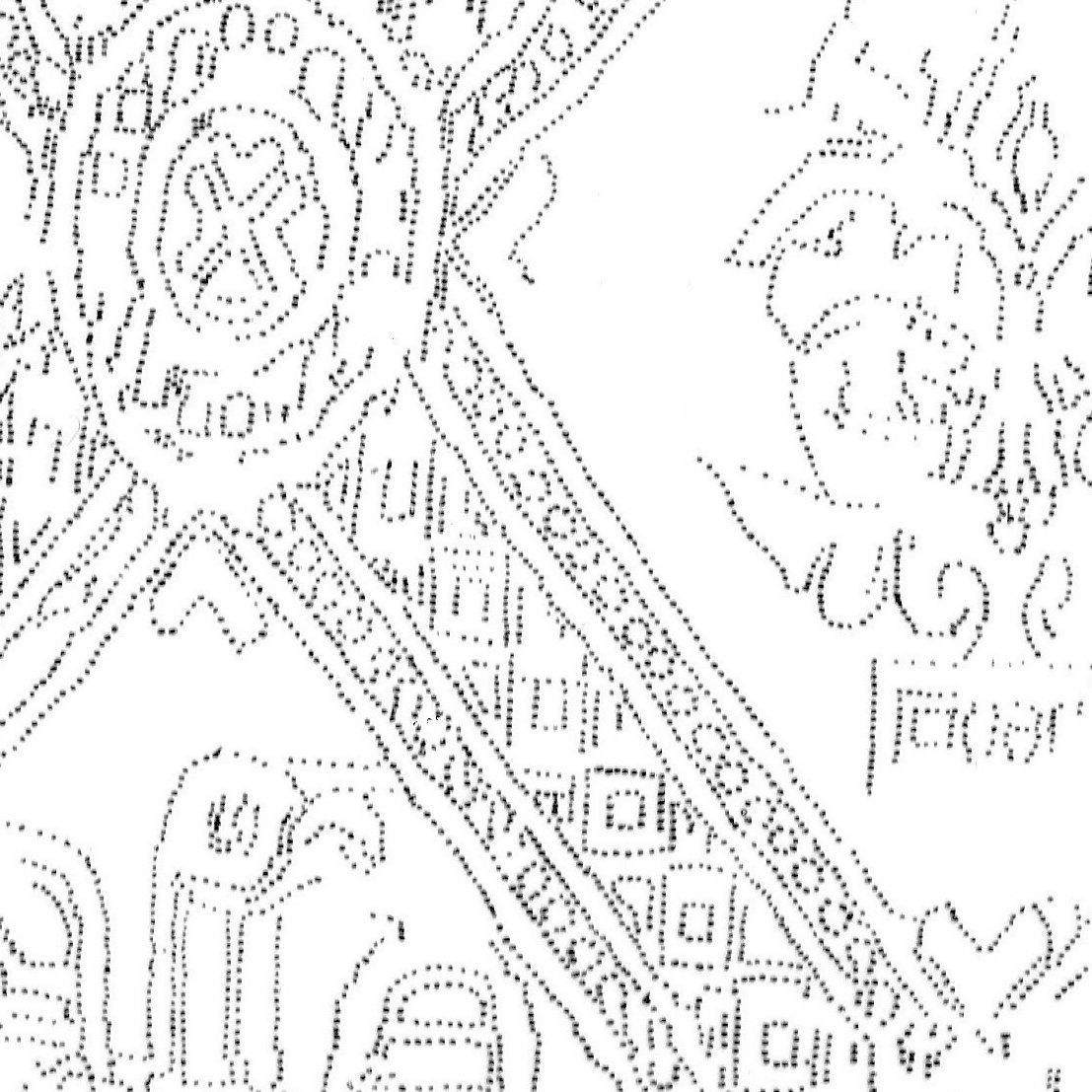Queen Edith
From 2006 to 2010, archaeological excavations took place in Magdeburg Cathedral as part of a cooperation between the State Office for Heritage Management and Archaeology Saxony-Anhalt and the then Saxony-Anhalt Cathedrals and Castles Foundation (now the Kulturstiftung Sachsen-Anhalt [Saxony-Anhalt Cultural Foundation]), the Martin Luther University of Halle-Wittenberg, and the state capital Magdeburg. The investigations yielded a wealth of important and exciting results. The most surprising and spectacular find was certainly the discovery of the coffin of Queen Edith - the first wife of Emperor Otto I - who died in Magdeburg in AD 946 at about 36 years of age.
In connection with the investigation of the building history of the cathedral, it became necessary in mid-November 2008 to move the Renaissance tomb of Queen Edith from 1510. For a long time, this had been considered a cenotaph, i.e. an 'empty tomb', and thus a mere monument without any actual function as a sarcophagus. However, this assumption proved to be wrong: a lead coffin was discovered inside the supposed cenotaph. According to the inscription on its lid, it contained the mortal remains of Queen Edith after her second reburial in 1510.
Since the lead coffin was in a severely degraded state of preservation, it was decided to secure the coffin as well as conserve and examine its contents in the restoration workshop of the State Museum of Prehistory in Halle.
It was therefore recovered and under laboratory conditions examined and conserved in the restoration workshop of the State Museum of Prehistory. A team of more than 40 scientists from a wide range of disciplines was involved in investigating the burial, whose research served in particular to clarify one major question: Were the bones in the lead coffin really the mortal remains of Queen Edith?
Immediately after opening the coffin lid and the preserved linen cloth, it became apparent that this was an extraordinary find: beside the bones of the interred, various, obviously high-quality textiles were visible. Everything lay in an unsorted and disturbed state: at least five different types of textiles (from different periods), bones, mortar remains, fragments of wood and iron, as well as a conspicuous number of beetle remains.
In an elaborate and lengthy process of uncovering all these finds were systematically removed from the coffin, recorded, and documented. Material analyses accompanied this process.
A total of 821 packaging units of find material were recovered: From very small fragments such as pieces of wood to larger textile conglomerates, including a number of ›blocks‹.
The results of the scientific examinations of the bone material as well as other indications led to the conclusion that the bones can almost certainly be attributed to Queen Edith. These examinations (DNA and strontium isotope analysis, radiocarbon dating, anthropological examinations with regard to gender, state of health, and physique and so on) as well as the age determination of the textiles were mainly carried out by cooperation partners of the restoration workshop.
After the uncovering, initial analysis, and documentation of the textiles, they were packed up and stored in a suitable climate-controlled room. To date, they are being processed piece by piece, or rather 'block by block', by an external textile conservator. With great effort, the fragments, which have clumped together, are unfolded, cleaned, and preserved. The pattern is reconstructed and analyses of the weaving technique and manufacture are carried out so that conclusions can be drawn about the dating, quality, and quantity of the textiles. Since the textiles come from at least three different periods (9th to 11th century), it can be assumed that Edith was re-interred several times.
The lead coffin from the 16th century is partially corroded through and these spots were stabilised. Here also material-technological analyses have been carried out. Since the beginning of November 2018, the lead coffin is on display in the new Dommuseum Ottonianum Magdeburg. The remains of Queen Edith were reburied in a new coffin made of titanium - designed by the artist Cornelia Thümmel - on 22 October 2010.
Detailed information on the recovery, uncovering, and analysis of the mortal remains of Queen Edith as well as the textiles, plant and beetle remains from the lead coffin have been published in the book ›Königin Editha und ihre Grablegen in Magdeburg (Queen Edith and her tombs in Magdeburg)‹. The volume is available in the museum shop of the State Museum of Prehistory, from the publishers Beier & Beran, as well as in bookshops, and enables all interested readers to take a closer look at the exciting discovery and its investigation.
